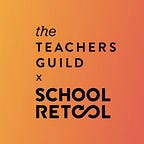How Teacher Feedback Is Helping WGBH Improve STEM Resources
by Jillian Orr & Laura Johnson
Jillian is Executive Producer and Laura is Senior Manager, Learning Experience at WGBH, a partner on our Collaboration to design active and authentic STEM.
WGBH Educational Foundation in Boston is a leading public media producer, and as such, we keep the mission of education at the core of what we do. Through this mission, we provide free resources that support active STEM engagement in the classroom and at home. As part of the 100kin10 Fellowship focusing on the goal of promoting active STEM teaching and learning from preschool to third grade, we questioned: with the connection between home and school greatly influencing children’s learning, and therefore teachers’ teaching, how can teachers effectively translate and communicate the instructional experiences from the classroom to parents to create a strong through line of active STEM learning for students?
During the fellowship, we explored the development of an app that provided an engaging channel of communication between home and school by turning media captured during moments of classroom learning into video compilations that identified active STEM learning and engaged parents. Leveraging appeal of and rigorously developed resources from our Peep and the Big Wide World property, our app design allows for teachers to access professional development around facilitating, documenting, and reflecting on active STEM learning in the classroom while the video compilation and related activities support parents in extending, replicating, or inquiring about those experiences with their children at home.
To get feedback, we interviewed teachers, visited classrooms, and spoke with parents about our idea. We leveraged the expertise of these groups to help define the challenges faced in active STEM teaching and learning and to ask questions about how the app might be used in the classroom and to promote communication with others. We worked with groups of end-users to 1. test the experience of taking video and photographs during classroom instruction, 2. gather insights on an initial wireframe of the app, and 3. develop a prototype of the video compilation. Through all of this, we have gathered feedback that will drive future iterations of specific features and scaffolds that teachers need.
We are eager to continue to collaborate with teachers and parents to shape truly effective and implementable solutions to which public media can contribute. Here are some questions for you (we’d love to see you add responses below):
- How are you using photographs and videos in your classroom to document active STEM engagement?
- What insights do you have from your own classroom context that could help inform our next testing and iteration of our idea?
- Based on your own experiences, what advice would you offer to our team about the home-school connection and communication that fosters active science learning?
The Fellowship experience allowed us to double down on our commitment to including our users in our research, design, and development processes. As you embark on your own design journey, engage as many relevant folks as you can that will allow you to access different perspectives, varied contexts, and ultimately result in a much more viable and innovative product that addresses a true need.
Learn more and get involved in our Collaboration on active and authentic STEM here.
